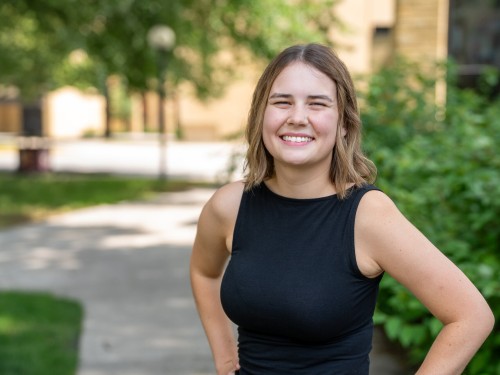Preprofessional Program Options
The pre-health professions program is for students who intend to pursue professional programs in the areas of athletic training, chiropractic, dentistry, medicine, occupational therapy, optometry, pharmacy, physical therapy, physician assistant, or veterinary medicine.
Athletic Training
Students who intend to pursue a master’s degree in athletic training most often major in exercise science and complete recommended biology, chemistry, and physics coursework.



AJ Flemming ’17 on Being an Athletic Trainer
Chiropractic
Students accepted by chiropractic schools come from a variety of majors. Required courses are in biology, chemistry, mathematics, and physics. You’ll have opportunities to participate in faculty-student research, internships at healthcare facilities, and complete anatomy coursework with human cadavers.



Katelin Kruger ’20 on Preparing for Chiropractic School
Dentistry
Dentistry ranks second to medicine in the number of graduates entering professional schools each year. Dental schools generally do not mandate a specific academic major but most Concordia pre-dental students major in biology or chemistry. All schools require the Dental Admissions Test, which is generally taken in April of the junior year.



Taylor DeVine ’23 on his Pathway to Pre-Dentistry
Medicine



Maddie Sather ’15 on Being Prepared for Med School
Occupational Therapy
A variety of undergraduate majors are good preparation for OT programs; however, most Concordia students opt to major in psychology. Liberal arts courses and courses in art and music are also highly advised.
Optometry
Students intending to pursue a Doctor of Optometry often choose to major in biology or chemistry. Successful applicants commonly have volunteer and work experience in the field. Participation in Concordia’s optometry internship program increases the likelihood of acceptance by professional programs.
Pharmacy
This program is for students intending to pursue a Doctor of Pharmacy degree. Students on the pre-pharmacy track often choose to major in biology or chemistry and apply to PharmD programs following their junior year. Students also now have the option of majoring in biosciences with a pharmacy concentration.
Starting in Fall 2025, two accelerated dual-degree programs will be offered in partnership with the North Dakota State University School of Pharmacy and the Medical College of Wisconsin Pharmacy School. With the NDSU (3+4) pathway, students will earn a Bachelor of Arts degree in biosciences with a pharmacy concentration from Concordia and both a Bachelor of Science in pharmaceutical sciences degree and a PharmD degree from NDSU in seven years or less. With the MCW (3+3) pathway, they will earn a Bachelor of Arts degree from Concordia in either biochemistry or biosciences with a pharmacy concentration and a PharmD degree from MCW in just six years.
Physical Therapy
Most pre-PT students major in biology, psychology, or exercise science. Related experience is often an important prerequisite for PT schools and our students achieve this through a combination of volunteer and work experiences.



Kyra Nichols ’23 on her PEAK Opportunity
Physician Assistant
Each year, there is an increased demand for physician assistants. Most students interested in the field decide to major in biology or chemistry but will complete coursework in other areas. Observation and related work experience requirements exist for most programs.
Veterinary Medicine
Pre-veterinary students are required to take courses in biology, chemistry, physics, mathematics, and a variety of non-science courses. Veterinary medical schools expect applicants to have experience working with animals. Our faculty oversee internship experiences that provide exposure to both small animal and large animal veterinary medicine.
Professional Program Options
Clinical Laboratory Science Major
Our affiliation with the School of Clinical Laboratory Science at Sanford Medical Center in Fargo, North Dakota, allows students to complete the internship requirement here during their senior year.
Related Stories

Making the First Days Count
Moving to a new place can be overwhelming. As Orientation Chair, Montana native Ahna Novasio ’26 helps make that transition smoother for new Cobbers.

Aiming for Success
The thrill of competition pushes two-sport athlete Greta Tollefson ’25 to excel athletically and academically.